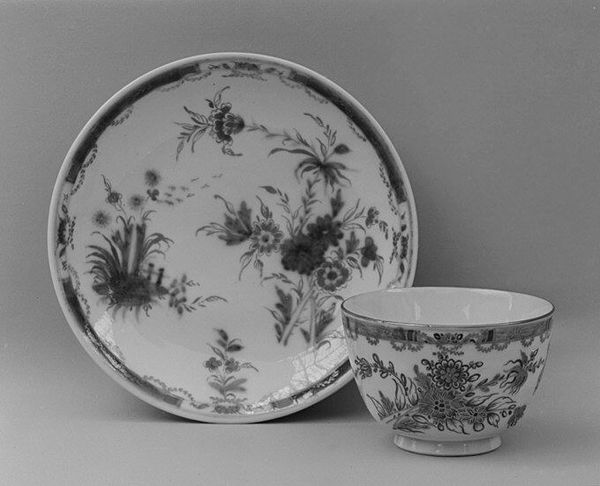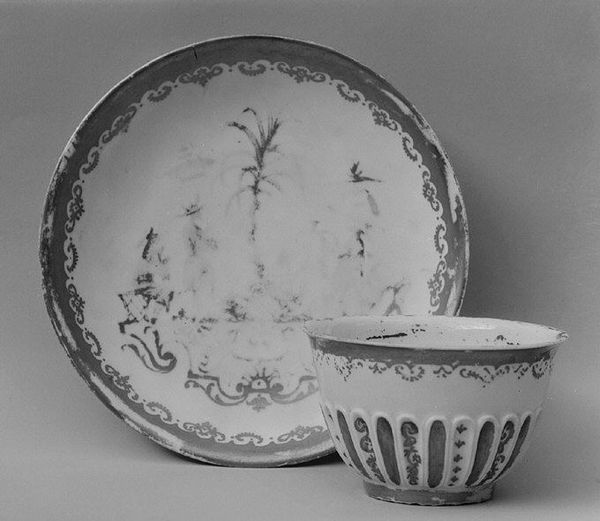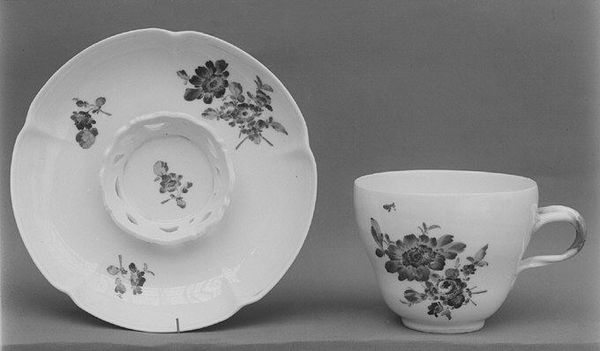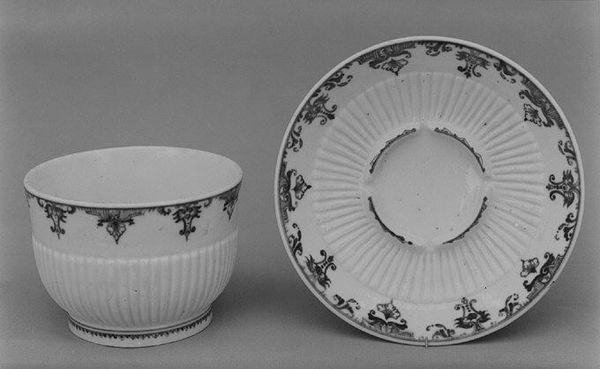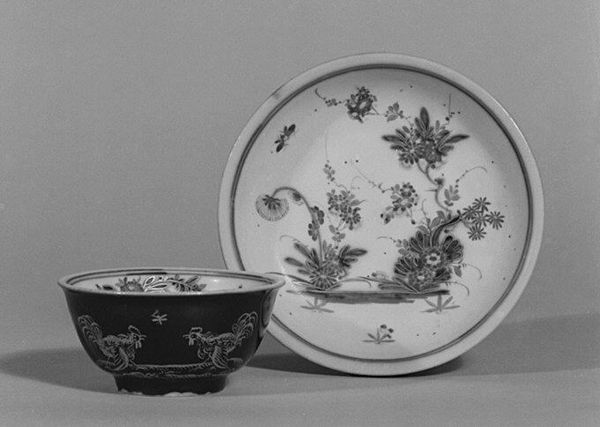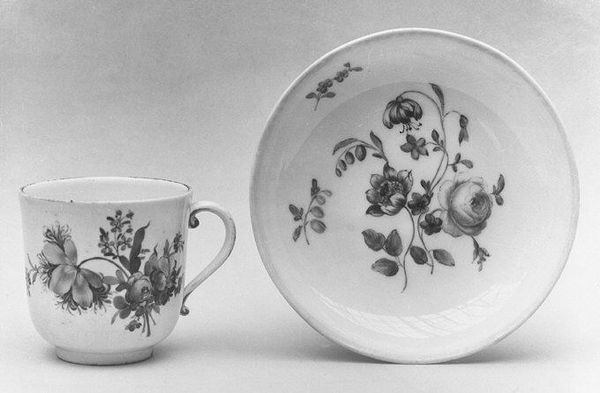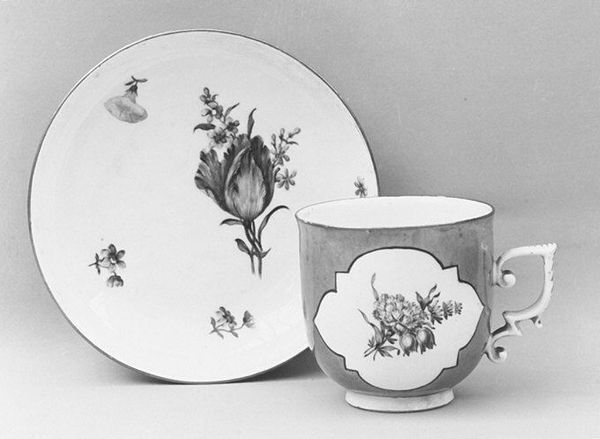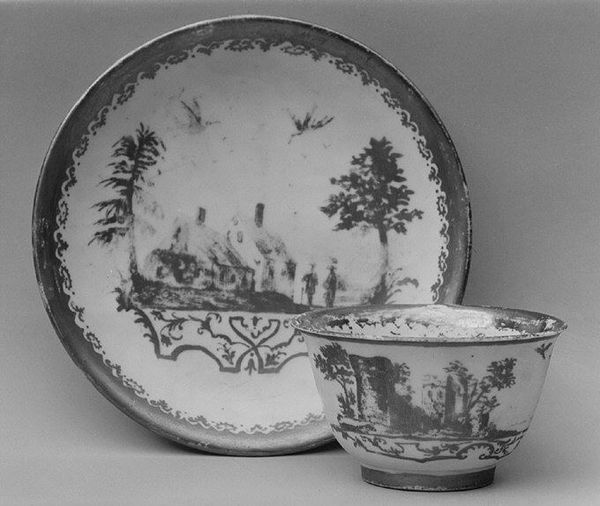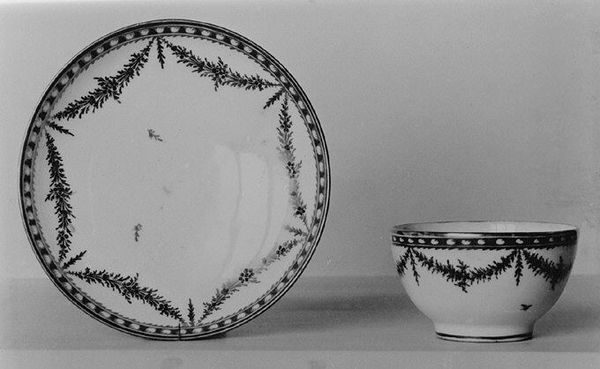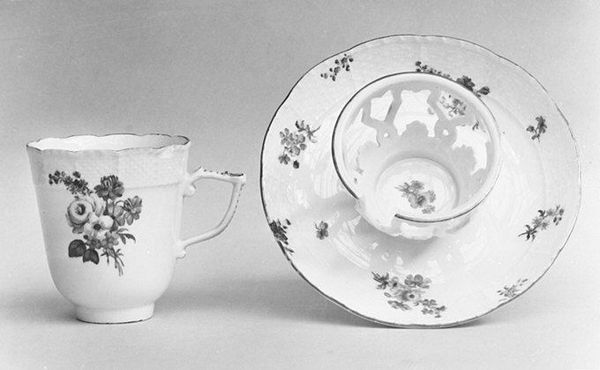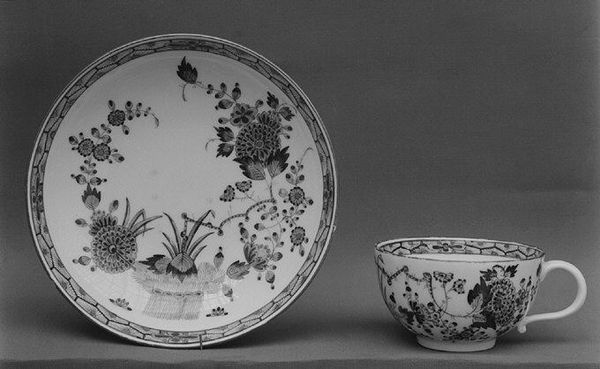
ceramic, porcelain, sculpture
#
ceramic
#
flower
#
porcelain
#
sculpture
#
ceramic
#
decorative-art
Dimensions: Height (cup .118): 1 1/2 in. (3.8 cm); Diameter (saucer .139): 4 1/2 in. (11.4 cm)
Copyright: Public Domain
Editor: So, here we have a delicate porcelain cup and saucer made by the Doccia Porcelain Manufactory between 1785 and 1799. It feels so fragile and restrained. How can we begin to interpret its historical role? Curator: Well, considering the era, think about what porcelain represented socially. This wasn't just a cup; it was a signifier of wealth, taste, and participation in global trade networks. Porcelain from the East was incredibly coveted. To have your own manufactory in Europe creating similar wares allowed participation in power structures and access to exclusive commodities. Editor: It's interesting to consider the imagery of the flowers, too. Was that purely decorative or symbolic? Curator: Highly symbolic! Floral motifs in the 18th century weren't random. Each flower could represent certain virtues, social standing, even political alliances. Who consumed from these porcelains and how might its floral symbolism reinforce their identity and position within society? And what was its market within the evolving aesthetics and economic contexts of the time? Was it challenging prevailing styles, appealing to emerging consumer preferences, or reaffirming tradition? Editor: I hadn't really considered how loaded everyday objects could be! So, this simple cup and saucer speak volumes about global trade, wealth, taste, and social position at the time? Curator: Exactly! It highlights how material culture shapes and reflects historical power dynamics, something we often overlook. We assign great power to the paintings and monumental artworks in museums but forget the agency that domestic items can also have. Editor: Fascinating. I’ll definitely see everyday objects differently now. Thanks for widening my perspective.
Comments
No comments
Be the first to comment and join the conversation on the ultimate creative platform.
